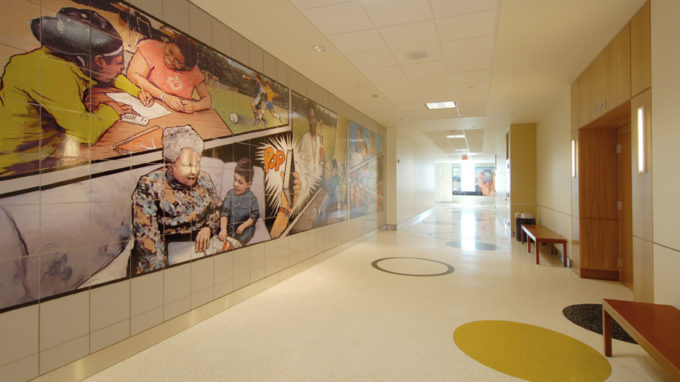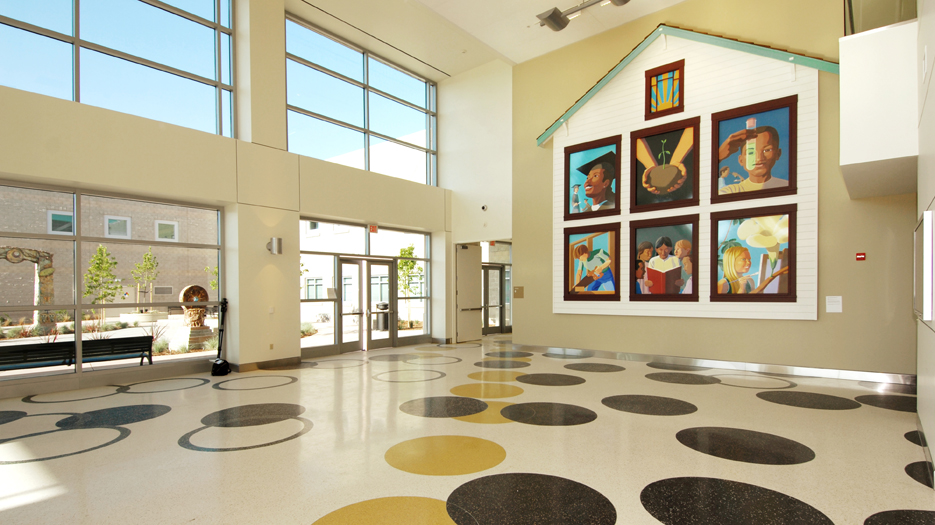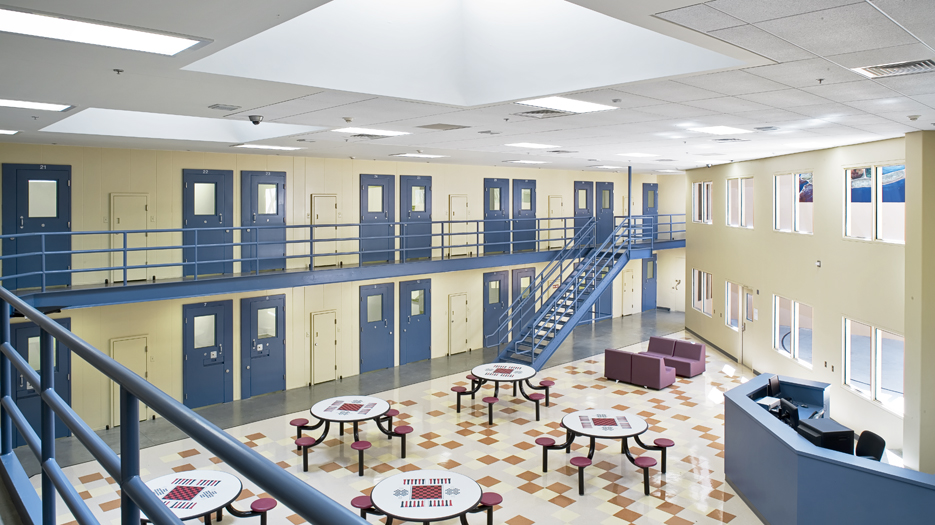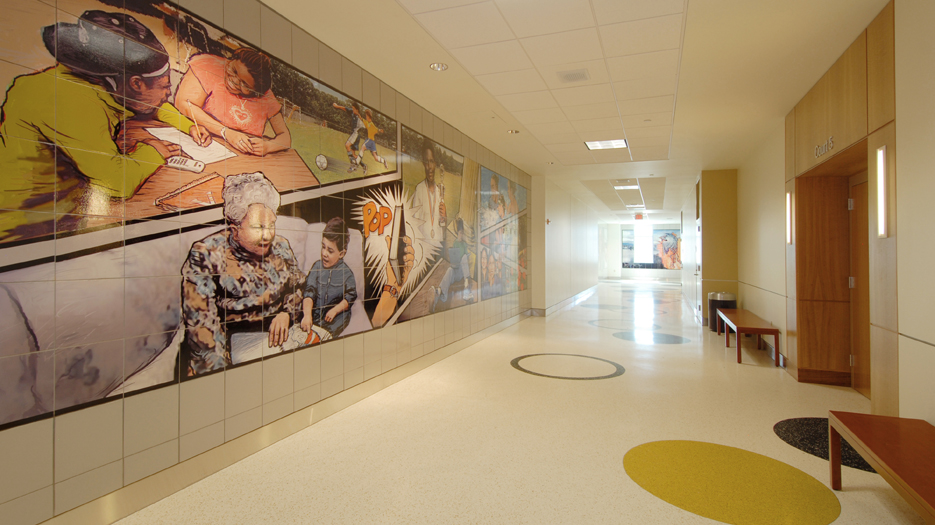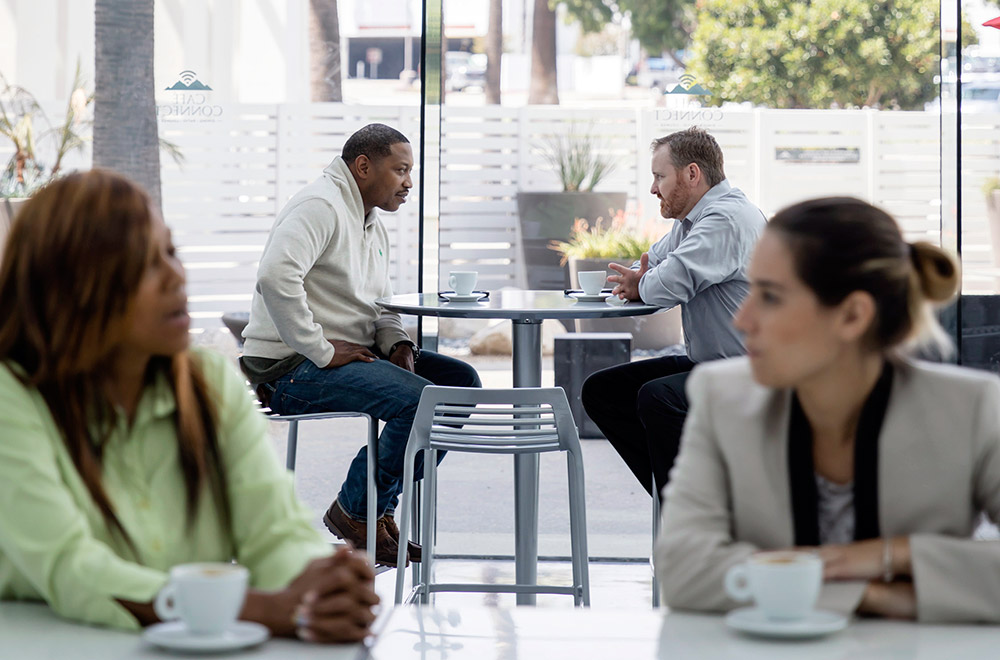When young people are sent to a correctional facility and given the tools they need to be successful while there, they are more likely to lead happy, productive lives after incarceration.
By focusing on juvenile correctional facility design principles that are restorative, such as open community areas, daylighting, calming acoustics, and more, facility administrators in partnership with architects can foster rehabilitation and create spaces in which young people can thrive.
Why Rehabilitative Juvenile Correctional Facility Design Matters
The best correctional facility design is based on normative design principles, which play an important role in reducing recidivism rates. In other words, when your juvenile correctional facility looks and feels more like a camp or a school than a prison, rehabilitation is more likely.
In a traditional juvenile correctional facility, individual cells are placed along narrow corridors and overseen by staff in elevated glass control rooms. But that type of layout does little to encourage positive interactions between inmates and supervisors.
Young people are more likely to cooperate and communicate with staff and actively participate in therapeutic programs when they are housed in an open, positive, welcoming environment that focuses on reformation rather than punishment.
At the Alameda County Juvenile Justice Center in San Leandro, California, HMC Architects partnered with another architectural design team to create a mix of secure areas and open community spaces. When juveniles break a rule, they are separated from the community and taken to a secure room. Through good behavior, they earn their way back into the community.
The Center also makes use of open staff stations to increase the comfort levels of both the juveniles and staff. The control stations are placed so that supervisors have excellent visibility and can intervene quickly, before conflicts escalate to violence. In fact, due to the installation of these control stations, violent incidents have decreased dramatically. Moreover, fewer violent incidents mean juveniles are less likely to receive additional infractions on their records, which makes it easier for them to find work or get accepted into academic programs after release.
These spaces improve the psychological well-being of inmates by promoting positivity and the effective communication skills juveniles need to turn their lives around. They also improve staff effectiveness and morale. Today, there is a waitlist of applicants vying for supervisor positions at the facility because the physical environment allows them to create positive change and the safety standards are so high.
The Most Effective Juvenile Correctional Facility Design Considerations
The layout of your facility, combined with the materials you use and the ambiance you create, can have a positive impact on rehabilitation rates. To create the most supportive environments, consider the following:
- Open Communal Areas: Increasing the size or number of community spaces will make the facility feel more open and encourage juveniles to leave their rooms and interact with peers and counselors.
- Flexible Furnishings: Modular chairs, tables, and sofas in communal rooms invite flexibility of use. Chairs can be pushed to the center of the room for group discussions or arranged in clusters to allow for one-on-one or smaller group counseling.
- Daylighting: Floor-to-ceiling windows and skylights allow natural light into spaces to promote a calming, less confined atmosphere.
- Central Control Stations: Supervisor stations placed at ground level and at the center of dayrooms and cafeterias allow inmates to feel more comfortable talking to staff. Counselors and supervisors can still keep a close eye on inmates while also helping to promote more casual, positive, face-to-face interactions.
- Outdoor Spaces: Designing secure outdoor gardens, greenhouses, athletic fields or courts, and eating areas can improve attitudes. When juveniles spend time outside, especially in green, non-threatening spaces, they feel less trapped. Moreover, these spaces can be designed around sports, outdoor horticulture, and other programs that teach juveniles important skills they can use after they’re released.
- Durable, Familiar Materials: Hard furnishings, such as tables, should be made from scratch-resistant materials to prevent defacing and vandalism. However, they should also be familiar to juveniles and not appear “institutional.” For example, acrylic tables are durable without looking cold or dreary.
- Peaceful Features: Facility interiors should promote a sense of calm. Choose soft LED lighting rather than harsh fluorescents and include positive, inspirational artwork that ideally reflects local or regional character. At Alameda County Juvenile Justice Center, inmates were enlisted to paint murals, making the space more personal and dynamic.
- Calming Acoustics: A juvenile correctional facility can get noisy. By including sound-absorbing materials on the walls, you can prevent noise from traveling and from hindering communication. When inmates and staff can hear instructions clearly, they are less likely to need further instructions or become frustrated.
- Convenience: The design team for Alameda County Juvenile Justice Center also created a courtroom inside the facility to allow inmates to appear before judges on-site. Consultation rooms were designed, too, so that juveniles and their lawyers can discuss their cases and update court officials on their progress. Not only does this benefit juveniles in the facility, but also it saves taxpayer money and correctional facility resources.
- Personalized Details: You can empower juveniles to make spaces their own by allowing them to re-arrange furniture and even choose their own bedding color. When young inmates are presented with options, they are less likely to vandalize their rooms and may feel more comfortable living in the facility.
These design details not only encourage rehabilitation, but also, when integrated with existing security standards, they help ensure that staff and inmates feel safe in the space.
The Benefits of Effective Juvenile Correctional Facility Design
Beyond reducing recidivism rates and discouraging violence in correctional facilities, normative design may also be more cost-effective. According to a June 2018 Urban Institute report on community-based alternatives to juvenile incarceration, the state of Virginia “spent $15 on youth incarceration for every $1 spent on community-based services in 2016 at a staggering cost of more than $170,000 per youth per year.” By creating more supportive facilities that promote juvenile rehabilitation, states could save hundreds of thousands of dollars per year.
Creating a juvenile correctional facility that breaks away from traditional prison design is an easier process when you hire an experienced design firm to handle every detail. HMC Architects understands how to design a correctional facility around the needs of inmates and staff. From Alameda County Juvenile Justice Center to the San Diego County Women’s Detention Facility we have designed spaces that promote rehabilitation and help reduce recidivism rates.
We specialize in designs that encourage rehabilitation rather than punishment, so that juvenile inmates can lead more productive, fulfilling lives after release. If you’re ready to learn more about juvenile correctional facility design, contact HMC Architects today. For answers to questions about correctional facility design and design of other civic buildings, email James Krueger, AIA, Design Principal, directly.

